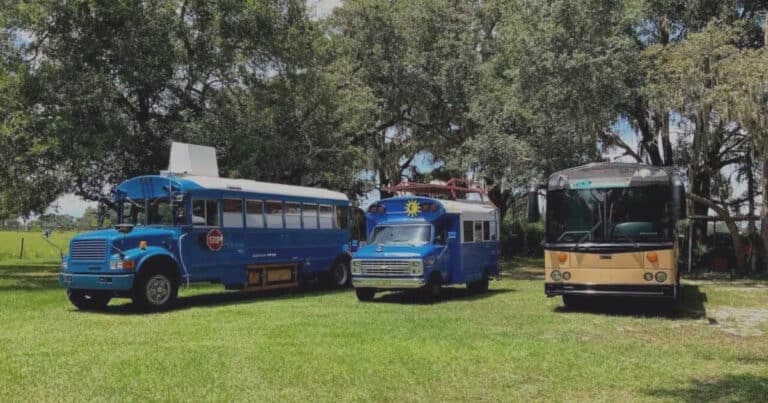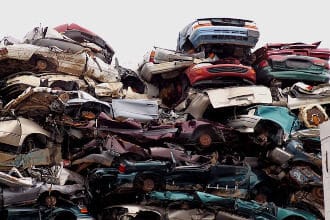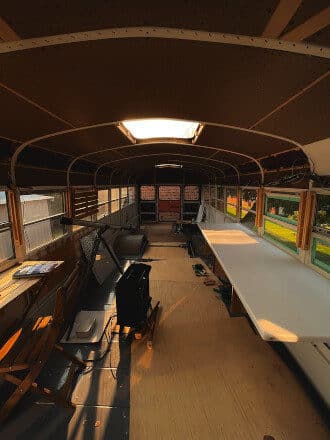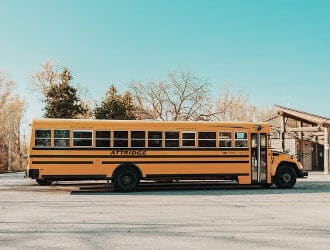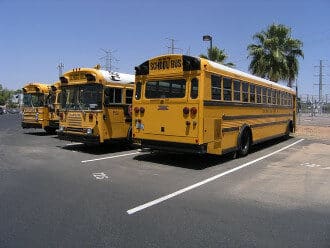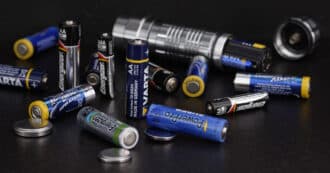By Harry Cooper – Automobiles have been a thorn in the side of the environment for a while. They produce lots of carbon emissions and they create large amounts of waste when they are disposed of. Getting rid of cars and buses altogether is not a practical solution in such a driving driven world. However, many people have found creative ways to make the most out of old vehicles, specifically old school buses. School bus conversion is the newest trend in sustainable living.
Getting the Most Out of Automobiles
There has been a growing movement to repurpose or renovate old school buses. People everywhere have started taking old school buses and turning them into tiny mobile homes or new, more efficient vehicles.
These converted school buses have become trendy ways to reduce the waste created by the automobile industry. While living in a converted bus may not be for everyone, it can be a great way to live a more sustainable lifestyle.
The Impact of Automobiles on the Environment
The invention of cars and buses changed the world. It allowed for people to get around faster and helped moved the world forward. However, as the demand for cars grew, we began to see the devastating impacts that the mass production of motor vehicles had on the environment. These impacts have only gotten worse with the increasing demand for automobiles.
Greenhouse Gas Emissions
It’s no secret that a car and a school bus require burning lots of fossil fuels to operate. This makes them one of the biggest contributors to greenhouse gas emissions.
In the US, transportation accounts for 29% of all greenhouse gas emissions. This includes, transport by planes, boats, and of course, automobiles. This makes the transportation sector the biggest contributor to greenhouse gas emissions in the US. Thus the massive amounts of cars and buses on the road today make a serious contribution to the carbon emissions causing climate change.
Waste From Automobiles
Producing, using, and disposing of cars and buses creates a tremendous amount of waste. This waste can range from anywhere from acid to heavy metals and can have a devastating impact on the environment.
Materials used in automobiles such as motor oil, batteries, and anti-freeze contain incredibly toxic chemicals. When these chemicals are disposed of improperly they can leak into the environment and ground water, and cause tremendous harm to animals and humans who come into contact with them. Along with this, disposing of old cars and buses also entails getting rid of large amounts of tires and scrap metal. These large waste products take up a lot of room in landfills and can stay there for a very long time.
Producing cars not only creates large volumes of waste, but also creates a lot of different types of waste, with lots of different effects on the environment. While some of these materials can be recycled, others have found ways to reuse old buses that would have been thrown away.
School Bus Conversion
As the auto industry continues to produce massive amounts of waste, many people have found creative ways to repurpose old school buses by turning them into mobile spaces that can act as a tiny house or home on wheels. While this kind of converted school bus home can be an unconventional lifestyle, many have found bus life to be be comfortable and sustainable.
How to Convert an Old School Bus
School bus conversions can be very arduous and time consuming. But if they are done right, they can be very rewarding.
There are many different things to consider when doing a school bus conversion. It is important to plan out each step, and know what you’re doing to make sure that there aren’t any structural or design flaws in your converted bus. Firstly, it is important to plan out the logistics of what you want your converted bus to look like. It is important to think about what you will need and want in order to determine how big of a project your conversion will be.
Will you use solar panels? Will you have a wood burning stove? Will you use bunk beds? Will the master bedroom have a queen size bed? Where will you place your dining table? Will you choose a composting toilet? What about a farmhouse sink? Since your school bus conversion is custom built you have many decisions to make before you start. Estimate the school bus conversion cost at the start of your project as there will definitely be hidden costs.
You will also have to do a great deal of prep work to get your bus ready for construction. This usually entails repainting the bus, gutting it, cleaning it, and finding the necessary insulation.
Once you’ve gotten your bus ready to start looking more like a home, you will want to think about how you will get plumbing and power, for your off grid lifestyle. This will be important for having clean water, climate control, and especially for disposing of wastewater.
Finally, you can think about putting in furniture and decorations. Once your home on wheels has been finished off, your perfect, tiny house should be able to drive around freely.
Different Types of Bus Conversions
There are many different shapes and sizes that a retired school bus can come in. Whichever used school bus works best for you depends on what you intend to get out of a bus conversion, how much living space and storage space you want, and what you’re willing to spend on a school bus conversion.
Choosing a School Bus
Old school buses can come in many different shapes and sizes. The size school bus you choose will determine how much you can fit in your bus, and the school bus conversion cost. A larger bus will give you more room to add more stuff to your home on wheels, but will probably take a lot more time and money.
There are also a couple different types of school buses that can be converted. Each one comes with its own specific benefits and challenges.
Dog-Nose School Buses
Dog-nose buses are what people typically think of when imagining a generic school bus. This type of school bus has a large nose sticking out of the front containing the engine and the front wheel wells.
Some of the benefits of using a dog-nose school bus is that it only has one wheel well in the back rather than two, which can get in the way when furnishing your bus. Additionally, it has much easier engine access for when you need to look under the hood.
There are also some downsides to using a dog-nose bus. The nose jutting out in the front can reduce visibility in an already hard to handle vehicle.
It also has an overall reduced square footage compared to other bus types, even though it only has one wheel well in the back.
Flat-Nose School Buses
As the name would suggest, flat nose school buses are buses with a flat front part, and what makes them unique is that their engine bay is on the inside of the bus. Much like the dog-nose design, flat-nose buses come with both advantages and disadvantages.
One advantage of the flat-nose bus is that it is a lot easier to see out of, and provides a lot more visibility while driving. Flat nose buses also have a lot more space over all, and can make for a much roomier, tiny home.
Having the engine bay inside the bus can lead to some challenges with this bus design. Being so close to the engine while driving, can make the driver hot and uncomfortable, and working on your engine in the same space that you live in could lead to some serious messes.
Making School Buses More Efficient
While turning old buses into mobile tiny houses, there are also ways to reuse school buses by converting them into more efficient vehicles. New York Cities schools have taken a different approach to dealing with their old buses. Instead of scrapping them or making them into homes, they have simply replaced their diesel engines with more efficient electric batteries. By doing this, New York City schools are creating less waste, and transporting kids with much less carbon emissions. This is another creative way to use old school buses instead of throwing them into the dump.
Religion and the New School Bus
Converting a school bus is a great sustainable solution to keep them from being scrapped for parts, or even worse, ending up in a dump. But what if before they even needed to be converted, they could be created in a sustainable way? Enter the electric school bus.
An article in Muskogee Phoenix describes how the Cherokee Nation unveiled their rural electric transit buses and electric school bus, which are the first in the region. The bus is to be used to transport students to Sequoyah High School. Principal Chief Chuck Hoskin Jr. is highly enthusiastic about these new buses:
The Cherokee Nation has always been a leader in environmental conservation and forward-thinking efforts that will reduce harmful activities impacting our natural resources… As we work to reduce our carbon emissions by 25 percent by 2027, we are wisely investing in sustainable projects that will have many long-term benefits. Our responsibility as stewards of the land, air and water will always be one of our most significant values, and introducing these eco-friendly transit vehicles into our fleet is an example of how we can make a great difference in our environment.
Deputy Chief Bryan Warner added that “Taking care of our land, our water and our air has always been important to Cherokees. We understand the sacred responsibility that comes with being good stewards of everything the Creator has given us… Replacing traditional transit buses with eco-friendly vehicles is a great way to reduce the carbon footprint we are leaving on the Earth.”
There are two ways to address the problem of unsustainable vehicles. One that was highlighted in this article is repurposing them. Another approach is to think of new ways to produce vehicles sustainably from the beginning. With these two approaches, we can transition our society towards a healthy, sustainable future.
* Featured image source

